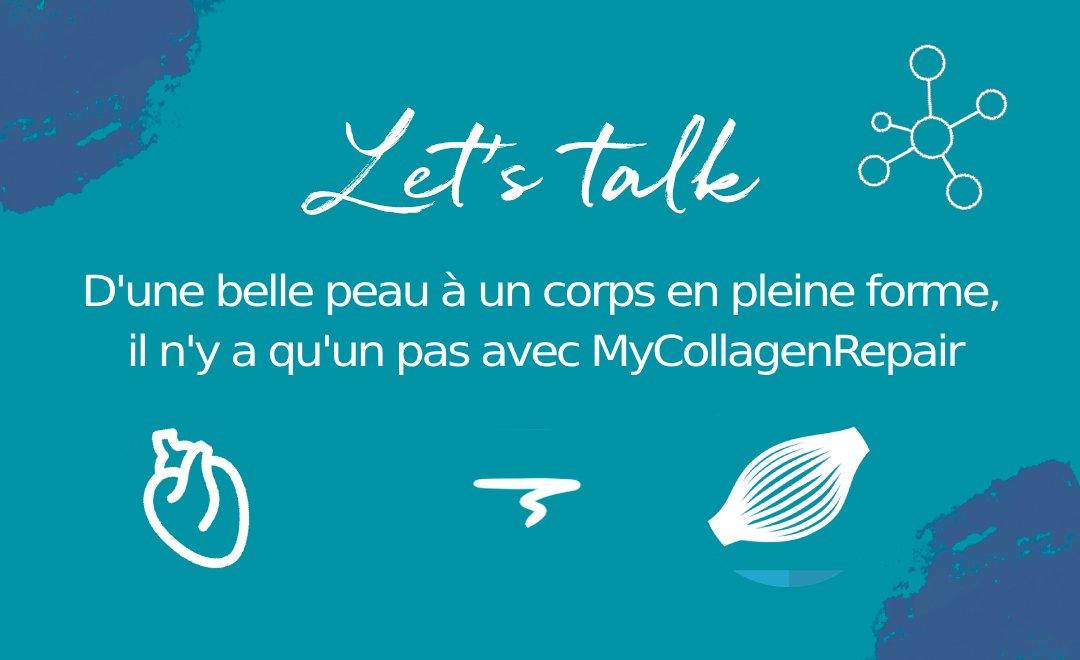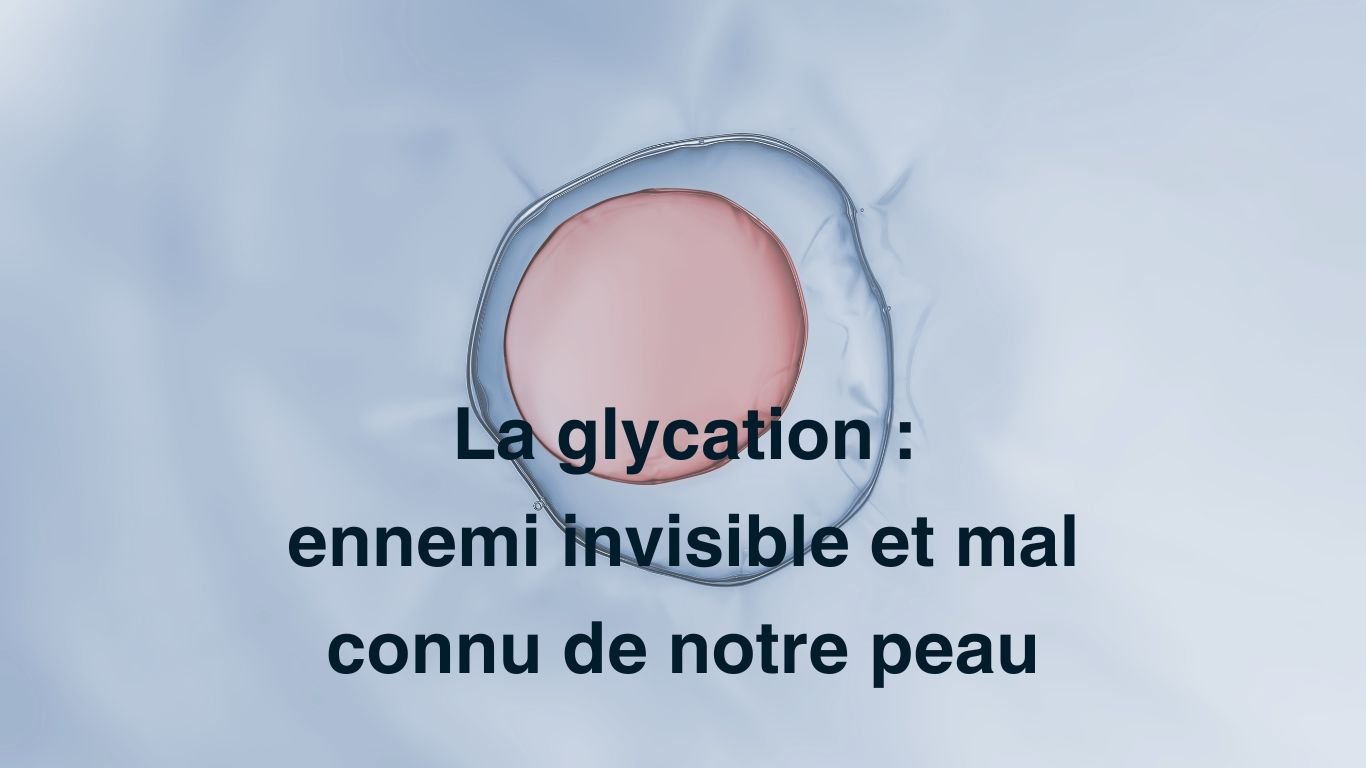Awarded by beauty victories, certain flagship food supplements from MyPureSkin remind us of the legitimacy of our brand in your anti-aging fight.
However, MyPureSkin products are capable of so much more.
At the border of skin care, anti-aging and muscle repair, the MyCollagenRepair formula focuses on recovery after exercise and supporting a healthy routine that includes significant physical exercise.
What active ingredients are found there? For what ? What can you expect from a MyCollagenRepair treatment?
Our team explains why athletes are also concerned.
Tissue and cellular repair and reduction of oxidative stress
Whether stretching, contractions or impacts, your muscles are subjected to various demands during physical exercise.
Throughout it, micro-lesions form, these are mainly:
- Damage to your muscle fibers (most commonly these are tears);
- Damage to your connective tissues (micro-cracks in your bones and cartilage or even breaches in the walls of your blood vessels)
- Skin lesions (very typically blisters but also rashes or redness when repeated movements form folds in certain areas of the skin).
How does your body repair these lesions?
These lesions are “normal” in the sense that there are natural repair mechanisms in the body. These involve different molecules, certain agents of the immune system and specific metabolism cycles in a 3-step waltz:
- Triggering and management of an inflammation reaction;
- Satellite activation of the process of generation, proliferation and differentiation of new cells;
- Protein synthesis and remodeling of areas showing lesions.
The process can vary greatly in the case of connective tissues depending on whether we are talking about blood vessels, cartilage or other.
In the case of muscle tissue, however, the procedure remains essentially the same: let's focus on the repair of your muscles.
The inflammation reaction
First, your body produces signal molecules announcing inflammation in the areas affected by the lesions in order to attract certain immune cells. These are largely macrophages and neutrophils which respectively “eat” the cellular debris (from muscle tears for example) then “put out the fire” (i.e. eliminate the signal molecules to stop the inflammation reaction).
Replacement of missing cells after injury
Secondly, the body then activates the process of mitosis (cell division) in and around the areas affected by the lesions. In doing so, it produces new cells.
It ensures their proliferation in order to replace the missing cells following the lesions.
In the case of muscles, these are myoblasts: muscle stem cells which, once mature, constitute the tissue (muscle fibers).
Thus, the myoblasts begin by differentiating (that is, maturing into specialized cells) then agglomerate and then fuse to become a larger structure called a “myotube”.
This myotube then gradually structures itself and assembles with other similar ones to form a muscle fiber: this is myogenic fusion.
Restructure and grow: the muscle is rebuilt
Ultimately, your body must use the muscle fibers it has produced to rebuild your muscles.
To take your fibers where they need to go, to assemble them, to make them grow and to strengthen them, they need specific proteins.
This is why your body uses protein synthesis.
Once nourished, your fibers being assembled must tighten and form a functional muscle: this is the remodeling stage.
Molecules having an impact on tissue repair
Whether it's your muscles or your connective tissues, your body can benefit from a boost by using the properties of certain active ingredients.
As recalled by the results of a study published in 2021 by Mishti Khatri's team (1) as part of a physical endurance exercise program, supplementation with collagen and vitamin C makes it possible to:
- Reduce pain (joints and muscles) during the reconstruction process;
- Improve the results (both in amplitude and speed of appearance) of tissue recovery (muscles and joints).
Furthermore, a previous study (published in 2015 by Denise Zdzieblik and colleagues) demonstrated (2) even more interesting results in the context of the aging process.
Indeed, this publication highlights the effects of collagen supplementation for seniors subject to the phenomenon of sarcopenia (i.e. men for whom muscle mass decreases drastically while fat mass increases).
We learn that the general recovery of the seniors in question is significantly faster and more effective with a collagen treatment.
Finally, it is important to note that in these two studies, a particular form of collagen was used: collagen peptides.
Some essential active ingredients for physical recovery
Generally speaking, recovery after physical effort can greatly benefit from the consumption of certain active ingredients, as long as we understand their properties.
The properties of collagen peptides
Muscle tissue requires protein to replenish itself, as previously stated. Collagen peptides are more bioavailable (more “digestible” in a way) than the collagen macro-molecule. This allows less “waste” in their breakdown into amino acids.
These amino acids are the building blocks of proteins that muscles need (including glycine, proline and hydroxyproline).
In a study published in 2018 by Naoki Ito's team (3), we discovered that collagen helps increase levels of IGF-1 (a hormone similar to insulin), the role of which is, among other things, to stimulate the growth of muscle cells (but also that of skin cells).
Finally, the key place that collagen naturally takes in the body makes it an ingredient of choice for sports recovery formulas (since it is a major constituent of the ExtraCellular Matrix in which, among other things, muscle cells and those of the skin).
The properties of hyaluronic acid
Although not having a direct impact on recovery, hyaluronic acid fulfills an essential role in hydrating the skin, muscles, tendons, etc.
In addition, it has anti-inflammatory properties, which makes it easier to manage the immune response for the body after your physical exercise.
Consuming hyaluronic acid therefore helps reduce the feeling of muscle fatigue and associated pain, in addition to limiting friction between the joints, offering them additional protection after exercise.
The properties of vitamin C and vitamin E
As explained above, vitamin C has an immune function which makes it a preferred active ingredient for a food supplement aimed at physical recovery.
Furthermore, it stimulates the synthesis of collagen, essential for the reconstruction of muscles, ligaments, skin, etc.
Finally, its antioxidant properties help to protect the wall of blood vessels after exercise, in order to limit the risk of additional deterioration linked to free radicals generated by the body during physical exercise.
Generally speaking, this also helps reduce the risk of premature aging of the body.
The anti-inflammatory effects of vitamin E, meanwhile, help support the body at the start of recovery. But vitamin E is also capable of causing some vasodilation, which facilitates the circulation of blood, and therefore the delivery of oxygen and other resources necessary for your physical recovery.
The properties of coenzyme Q10
Queen of active ingredients linked to physical recovery at the cellular level, coenzyme Q10 is often used in nutricosmetics for its involvement in the production of energy by your cells.
If your body needs resources (oxygen, trace elements, amino acids, etc.) to rebuild areas damaged by exercise, it also needs energy.
The cell division and differentiation cycles of your muscles, for example, consume a lot of it.
In addition to acting as an antioxidant, coenzyme Q10 has the role of transporting ATP (Adenosine TriPhosphate), a direct source of energy for your cells, which makes it an active ingredient to consume before, during and after your session training.
The properties of piperine
The main active ingredient of black pepper, piperine is one of the ingredients used by the nutricosmetic industry to create synergies and to improve the effects of other active ingredients.
Capable of increasing the bioavailability of vitamins C and E but also of many other nutrients, piperine increases their impact on your body during your physical recovery.
The properties of rosmarinic acid and silymarin
During your physical exercises, you may consume fast sugars (protein bars, chocolate, sugar cubes, etc.).
This is completely normal since your body needs it to produce ATP in order to have energy that can be used quickly.
However, consuming sugar-based ingredients increases your risk of developing diabetes and other metabolic diseases. Furthermore, this risk increases with age.
Rosmarinic acid is useful in this regard since it helps regulate glucose consumption, similar to insulin, as shown in a study published in 2017 by Filip Vlavcheski's team (4).
In addition, rosmarinic acid is already known for its anti-inflammatory and anti-oxidant properties, which contribute to your physical recovery after exercise.
Silymarin, for its part, helps improve your sporting performance by helping you modulate your immune response after exercise, which contributes to better reconstitution of your muscles (notably the heart muscle, which explains a notable improvement in sports performance following a treatment of several months).
It is through studies such as those of the Nancy Vargas-Mendoza team, published in 2020 (5), that it was possible to highlight these properties.
A complex combining beauty and health in harmony: the MyPureSkin signature
Over the last few years, the MyPureSkin brand has mastered the key themes linked to aging, which are:
- Maintenance and support of the skin in the face of aging;
- Improving physical condition and maintaining it during the senescence process;
- Prolonging the integrity of your body by maintaining your general well-being over the long term.
It is therefore with full knowledge of the facts that we have composed the MyCollagenRepair formula, which contains:
- Marine collagen peptides;
- Hyaluronic acid;
- Vitamins C and E;
- Coenzyme Q10;
- Bioperine (patented active ingredient created from piperine);
- Rosmarinic acid;
- Silymarin;
- SOD (SuperOxide Dismutase, with exceptional antioxidant properties).
By creating this food supplement, we provide you with a source of support in your health routine before, during and after physical exercise.
Why not put all the chances on your side by starting a first course of MyCollagenRepair?
- Study by researchers from Mishiti Khatri's team on the use of collagen peptides for recovery after physical exertion (mainly for joints): https://www.ncbi.nlm.nih.gov/pmc/articles /PMC8521576/
- Research by Denise Zdzieblik and colleagues on the effects of collagen peptides on recovery after physical endurance training in seniors: https://www.ncbi.nlm.nih.gov/pmc/articles/PMC4594048/
- Study by Naoki Ito's team on the impact of collagen in cellular reconstruction (muscles, skin, ligaments, etc.): https://www.ncbi.nlm.nih.gov/pmc/articles/PMC6315531/
- Research by Filip Vlavcheski and colleagues on the effects of rosmarinic acid against glucose: https://www.ncbi.nlm.nih.gov/pmc/articles/PMC6151814/
- Study by Nancy Vargas-Mendoza's team on the improvement of sports performance when consuming silymarin as a supplement: ncbi.nlm.nih.gov/pmc/articles/PMC7590064/





Share:
Collagen: an anti-aging active ingredient that works better as a team
Prebiotics against UV damage?